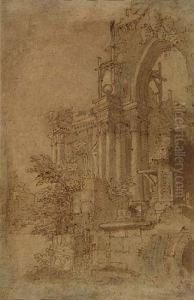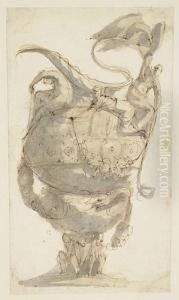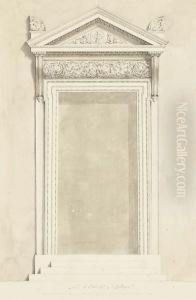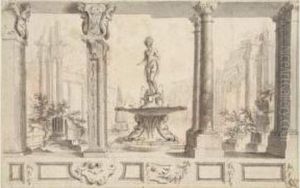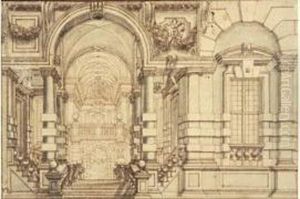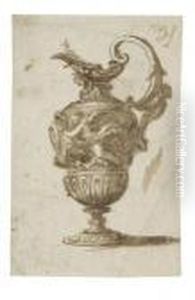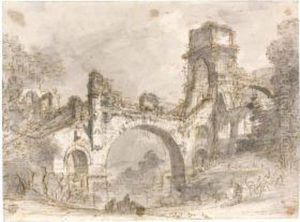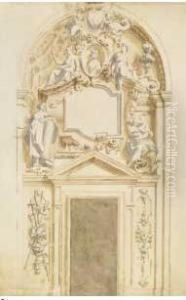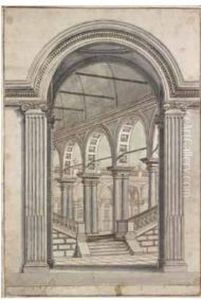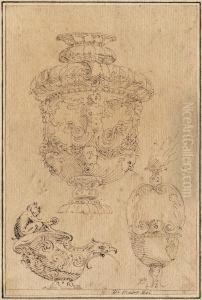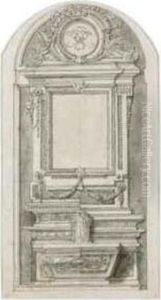Mauro Antonio Tesi Paintings
Mauro Antonio Tesi was an Italian artist, born in 1730 in Bologna, Italy, during a period rich in artistic tradition and innovation. Tesi was primarily known for his work as a draughtsman and painter, specializing in intricate architectural drawings and landscapes that reflected the burgeoning interest in neoclassicism during the 18th century. His artistic journey began under the tutelage of prominent figures in the Bolognese art scene, which was pivotal in shaping his style and approach to art.
Tesi's work is characterized by its meticulous attention to detail and the delicate rendering of architectural elements. He had a profound interest in the ruins of ancient Rome and the Italian countryside, subjects that frequently appeared in his drawings. His ability to capture the essence of these landscapes and structures with precision and elegance earned him recognition among his contemporaries and patrons.
Despite his considerable talent, Mauro Antonio Tesi's career was relatively short-lived. He died in 1766 at the young age of 36. Nevertheless, in his brief career, he managed to contribute significantly to the Italian art world, leaving behind a body of work that continues to be studied and admired for its beauty and technical skill. His drawings and paintings are held in various collections and museums, serving as a testament to his skill and artistic vision.
Tesi's influence extends beyond his immediate body of work. He was part of a broader movement that sought to revive and reinterpret classical antiquity through the lens of 18th-century sensibilities. His dedication to depicting historical and architectural accuracy not only reflected the intellectual currents of his time but also paved the way for future generations of artists interested in neoclassicism and the study of the past. Despite the brevity of his life, Mauro Antonio Tesi's legacy in the art historical canon is secured through his contributions to the development of architectural drawing and landscape painting in Italy and beyond.
